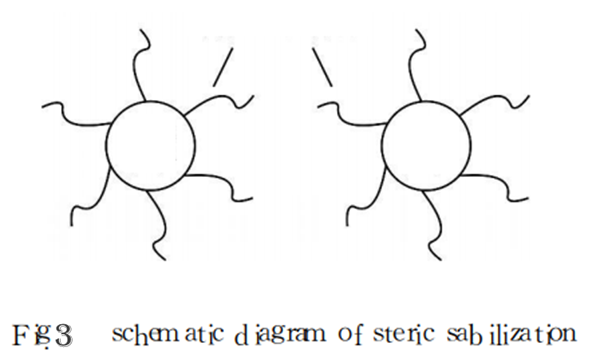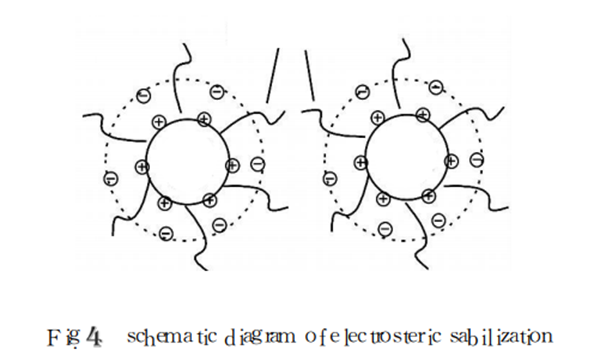- Home
- Products
- Elementary
- Boride Powder
- 3D Printing Powder
- Sulfide Powder
- Oxide Powder
- Carbide powder
- Nitride Powder
- Silicide Powder
- Hydride Powder
- Telluride Powder
- Selenide Powder
- Stearic Acid Series
- Phosphide Powder
- Nanoparticles
- Metal Alloy
- MAX Phase
- Lithium Battery Anode
- Surfactant
- Molecular sieves
- Concrete Admixtures
- News
- Answers
- Contact
- About
News
- 0
- 0
How to improve nanoparticles to make them more superior nanomaterials
If you are looking for high-quality products, please feel free to contact us and send an inquiry, email: brad@ihpa.net
Cluster of nanoparticles
The jumble of nanoparticles can be separated into two kinds: soft heap and also difficult jumble. Soft pile is mostly triggered by the electrostatic force in between fragments and van der Waals pressure. Because of the weak force, soft agglomeration can pass some chemical methods.
The law or the application of power to remove; the formation of hard load in addition to electrostatic forces as well as van der Waals pressures, there are chemical bonds, so difficult agglomerates are challenging to damage, require to take some special methods to control.
 < img src="// ueeshop.ly200-cdn. com/u _ file/UPAI/UPAI779
/ 1907/photo/1661a376e4. png"/ > Schematic representation of agglomeration of nanoparticles Dispersion of nanoparticles One of the methods to stop the formation of high-density, hard-block precipitates of nanoparticles is to lower van der Waals tourist attraction or communication between groups, so that the primary particles are not conveniently agglomerated to develop additional bits, thereby avoiding additional inter-atomic bonding. This leads to the development of high-density, hard-blocked precipitates. The anti-agglomeration device of nanoparticles is divided right into: (1) electrostatic stablizing (DLVO concept); (2) steric stabilization; (3) electrostatic steric stablizing.
Nanoparticle diffusion theory Electrostatic stablizing device (DLVO theory)
The electrostatic stablizing device, additionally referred to as the electrical double layer stabilization system, creates an electric double layer by changing the pH value to generate a specific quantity of surface fee externally of the fragment. The attraction in between the bits is greatly reduced by the undesirable force between the electrical dual layers, consequently recognizing the dispersion of the nanoparticles. The device is revealed as displayed in Figure 2.
< img src="// ueeshop.ly200-cdn. com/u _ file/UPAI/UPAI779
/ 1907/photo/1661a376e4. png"/ > Schematic representation of agglomeration of nanoparticles Dispersion of nanoparticles One of the methods to stop the formation of high-density, hard-block precipitates of nanoparticles is to lower van der Waals tourist attraction or communication between groups, so that the primary particles are not conveniently agglomerated to develop additional bits, thereby avoiding additional inter-atomic bonding. This leads to the development of high-density, hard-blocked precipitates. The anti-agglomeration device of nanoparticles is divided right into: (1) electrostatic stablizing (DLVO concept); (2) steric stabilization; (3) electrostatic steric stablizing.
Nanoparticle diffusion theory Electrostatic stablizing device (DLVO theory)
The electrostatic stablizing device, additionally referred to as the electrical double layer stabilization system, creates an electric double layer by changing the pH value to generate a specific quantity of surface fee externally of the fragment. The attraction in between the bits is greatly reduced by the undesirable force between the electrical dual layers, consequently recognizing the dispersion of the nanoparticles. The device is revealed as displayed in Figure 2.

- < img src="// ueeshop.ly200-cdn. com/u _ file/UPAI/UPAI779/ 1907/photo/38c1a5ba33. png"/ > Stochastic stabilization device The steric stablizing device is to include a certain amount of uncharged polymer substance to the suspension to adsorb it around the nanoparticles to create a microcell state, which causes repulsion in between the particles, thus attaining the function of diffusion. The device layout is displayed in Figure 4.
- Electrostatic steric stablizing device
The pH value of the polyelectrolyte makes best use of the dissociation degree of the polyelectrolyte, so that the polyelectrolyte on the surface of the fragment gets to the saturated adsorption, and the two together work to evenly disperse the nanoparticles. The system representation is received Figure 3.
 < img src="// ueeshop.ly200-cdn.
com/u _ file/UPAI/UPAI779/ 1907/photo/ed7d9c96f4. png"/ > Nanoparticle diffusion method The dispersion of nanoparticles in the medium is usually divided into 3 stages: 1 fluid wetting the strong bits; 2 spreading the bigger aggregates into smaller sized bits by external force; 3 stabilizing the distributed bits, making certain that the powder fragments remain in the fluid The stage remains consistently spread for a lengthy period of time to stop the distributed particles from re-aggregating. According to different dispersion systems, it can be split into mechanical action approach as well as surface adjustment approach.
< img src="// ueeshop.ly200-cdn.
com/u _ file/UPAI/UPAI779/ 1907/photo/ed7d9c96f4. png"/ > Nanoparticle diffusion method The dispersion of nanoparticles in the medium is usually divided into 3 stages: 1 fluid wetting the strong bits; 2 spreading the bigger aggregates into smaller sized bits by external force; 3 stabilizing the distributed bits, making certain that the powder fragments remain in the fluid The stage remains consistently spread for a lengthy period of time to stop the distributed particles from re-aggregating. According to different dispersion systems, it can be split into mechanical action approach as well as surface adjustment approach.
- Mechanical action
- Surface adjustment
- Surface adjustment of nanoparticles by inorganic substances
- Surface area modification of nanoparticles by raw material
 < img src ="// ueeshop.ly200-cdn.
com/u _ file/UPAI/UPAI779/ 1907/photo/c845513ec8. png"/ > final thought The surface area adjustment technology of nanoparticles is an edge technique very closely pertaining to numerous other self-controls, including colloidal chemistry, natural chemistry, crystallography, nanomaterials, modern-day instrument evaluation and screening. The surface covering alteration technology has actually been commonly utilized in the surface area alteration of nanometers, and also the research causes this area also reveal that the surface layer technology has an excellent growth possibility. However, the alteration system, modification technique and devices, and also the adjustment impact characterization are still not best. Sometimes, the issue can not be resolved basically, as well as more research study is urgently needed. Because of the significant adjustments in the physical and also chemical residential properties of the surface-treated fragments, the advancement of nano surface alteration innovation is taken into consideration a crucial methods of creating brand-new materials in the future. With the constant study as well as understanding of nano-particles, and even more exploration of the surface adjustment of nano-powders, nano-technology will certainly put in potential power in different fields and will generate a good culture. Advantages and also economic advantages.
< img src ="// ueeshop.ly200-cdn.
com/u _ file/UPAI/UPAI779/ 1907/photo/c845513ec8. png"/ > final thought The surface area adjustment technology of nanoparticles is an edge technique very closely pertaining to numerous other self-controls, including colloidal chemistry, natural chemistry, crystallography, nanomaterials, modern-day instrument evaluation and screening. The surface covering alteration technology has actually been commonly utilized in the surface area alteration of nanometers, and also the research causes this area also reveal that the surface layer technology has an excellent growth possibility. However, the alteration system, modification technique and devices, and also the adjustment impact characterization are still not best. Sometimes, the issue can not be resolved basically, as well as more research study is urgently needed. Because of the significant adjustments in the physical and also chemical residential properties of the surface-treated fragments, the advancement of nano surface alteration innovation is taken into consideration a crucial methods of creating brand-new materials in the future. With the constant study as well as understanding of nano-particles, and even more exploration of the surface adjustment of nano-powders, nano-technology will certainly put in potential power in different fields and will generate a good culture. Advantages and also economic advantages.
Luoyang Technology Co., Ltd is an expert Zinc Nanoparticles producer with over 12 years experience in chemical products r & d. If you are seeking excellent quality Zinc Nanoparticles, please do not hesitate to call us and send out a query.
Inquiry us
 < img src="// ueeshop.ly200-cdn.
com/u _ file/UPAI/UPAI779/ 1907/photo/ed7d9c96f4. png"/ > Nanoparticle diffusion method The dispersion of nanoparticles in the medium is usually divided into 3 stages: 1 fluid wetting the strong bits; 2 spreading the bigger aggregates into smaller sized bits by external force; 3 stabilizing the distributed bits, making certain that the powder fragments remain in the fluid The stage remains consistently spread for a lengthy period of time to stop the distributed particles from re-aggregating. According to different dispersion systems, it can be split into mechanical action approach as well as surface adjustment approach.
< img src="// ueeshop.ly200-cdn.
com/u _ file/UPAI/UPAI779/ 1907/photo/ed7d9c96f4. png"/ > Nanoparticle diffusion method The dispersion of nanoparticles in the medium is usually divided into 3 stages: 1 fluid wetting the strong bits; 2 spreading the bigger aggregates into smaller sized bits by external force; 3 stabilizing the distributed bits, making certain that the powder fragments remain in the fluid The stage remains consistently spread for a lengthy period of time to stop the distributed particles from re-aggregating. According to different dispersion systems, it can be split into mechanical action approach as well as surface adjustment approach.
 < img src ="// ueeshop.ly200-cdn.
com/u _ file/UPAI/UPAI779/ 1907/photo/c845513ec8. png"/ > final thought The surface area adjustment technology of nanoparticles is an edge technique very closely pertaining to numerous other self-controls, including colloidal chemistry, natural chemistry, crystallography, nanomaterials, modern-day instrument evaluation and screening. The surface covering alteration technology has actually been commonly utilized in the surface area alteration of nanometers, and also the research causes this area also reveal that the surface layer technology has an excellent growth possibility. However, the alteration system, modification technique and devices, and also the adjustment impact characterization are still not best. Sometimes, the issue can not be resolved basically, as well as more research study is urgently needed. Because of the significant adjustments in the physical and also chemical residential properties of the surface-treated fragments, the advancement of nano surface alteration innovation is taken into consideration a crucial methods of creating brand-new materials in the future. With the constant study as well as understanding of nano-particles, and even more exploration of the surface adjustment of nano-powders, nano-technology will certainly put in potential power in different fields and will generate a good culture. Advantages and also economic advantages.
< img src ="// ueeshop.ly200-cdn.
com/u _ file/UPAI/UPAI779/ 1907/photo/c845513ec8. png"/ > final thought The surface area adjustment technology of nanoparticles is an edge technique very closely pertaining to numerous other self-controls, including colloidal chemistry, natural chemistry, crystallography, nanomaterials, modern-day instrument evaluation and screening. The surface covering alteration technology has actually been commonly utilized in the surface area alteration of nanometers, and also the research causes this area also reveal that the surface layer technology has an excellent growth possibility. However, the alteration system, modification technique and devices, and also the adjustment impact characterization are still not best. Sometimes, the issue can not be resolved basically, as well as more research study is urgently needed. Because of the significant adjustments in the physical and also chemical residential properties of the surface-treated fragments, the advancement of nano surface alteration innovation is taken into consideration a crucial methods of creating brand-new materials in the future. With the constant study as well as understanding of nano-particles, and even more exploration of the surface adjustment of nano-powders, nano-technology will certainly put in potential power in different fields and will generate a good culture. Advantages and also economic advantages.